John Hurrell – 2 October, 2012
This show provides the sense of a lifetime's work, the range of his thematic interests to be explored in drawing, his pleasure at reaching a large audience who normally would avoid galleries but who would recognise his images on news stands on NYC streets. He was an easily identifiable celebrity artist, a cartoonist superstar.
Auckland
Saul Steinberg
THE NEW YORKER. NEW YORK, 1945-2000 (HAROLD, WILLIAM, ROBERT, TINA, DAVID, EDS.)
Curated by Robert Snowden and Scott Ponik
7 September - 6 October 2012
The New Yorker is a much admired, weekly magazine famous for its sophisticated but clearly expressed journalism (a certain kind of jargon-free prose), and love of witty cartoons and elegant graphics. Founded in 1925, it doesn’t have the vicious satirical edge of say Private Eye, and its advertisements of luxury goods can make you uncomfortable the way they are constantly pitched to the wealthy, but its writing (short stories and journalism) is famous for its precise language, detailed observation and factual accuracy.
One of the figures that assisted The New Yorker‘s rise in popularity is Saul Steinberg, with his regular watercolour or coloured pencil covers, and whimsical ink drawings. Steinberg was a Romanian immigrant whose inventive cartoons had considerable profile in the magazine from the fifties through to the late while William Shawn was editor. Though exhibiting occasionally in galleries, Steinberg disliked being called an artist - he seemed to think it was elitist to make collectable unique items, preferring instead having his images published to reach a very wide audience. Steinberg was adored by art critics and curators for his versatile mixing of many art styles and use of linear ambiguity, and thirteen years after his death, he still is.
It is easy to see why. Formidably erudite in his knowledge of architecture, art history, philosophy and culture in general, yet with an instinctive nose for paradox, his cartoons avoided captions - but often used words and punctuation within the image, inventively rendered as fanciful three-dimensional objects.
At Artspace you can see, laid out on rows of thin benches, a selection of Steinberg’s covers and drawings within the original magazines - with the original layout as it first appeared. The curators of this touring show, Robert Snowden and Scott Ponik have picked about a hundred issues (a tenth of his total output). And though Steinberg was coy about being called an artist - and this display is a lot of fun to explore thoroughly - the fact is his drawings look better in isolation in large hardcover coffee-table anthologies (check out your library catalogue, Auckland has several) where each item has a page to itself as a presented artwork. There the delicacy of his tremulous spidery line is unreduced and uncramped, his use of collage more obvious and his opulent colour celebrated. The sensual properties of his materials are more accessible than when originally published, when he was competing for attention with other contributors.
Looking at these magazines, it is easy to get distracted by the texts and advertisements on the double pages, and rival cartoons. The first magazine is 1946 and the last is 2000, so we have 54 years of social history framing Steinberg’s contributions.
That is really what this show provides: the sense of a lifetime’s work, the range of his thematic interests to be explored in drawing, his pleasure at reaching a large audience who normally would avoid galleries but who would recognise his images on news stands on NYC streets. He was an easily identifiable celebrity artist, a cartoonist superstar.
Just as it might be argued that Roy Lichtenstein’s best paintings are his investigations exploring the evanescent properties of mirrors and his zigzagging solo brushstrokes that look at dragged paint, I think Steinberg’s genius is most obvious in his inventive treatment of certain motifs, most notably his three-dimensional versions of spoken punctuation marks (esp. question and quotation marks) and other graphic ‘aural’ conventions - such as speech balloons from comics.
This exhibition of pageworks is a helpful introduction to the whimsical profundity of his thought (and perhaps a not-so-sly way of plugging The New Yorker) but in the end you need Steinberg’s coffee-table book anthologies (the best is the most recent: Illuminations) so you can look wider, analysing in more depth his reoccurring themes, studying further variations. Steinberg’s talent lay in turning abstract notions (like time and identity) into instantly graspable visual realities, palpable tropes that can be encountered in his imaginative renderings of the everyday. It is a shame none of his original artwork is here, but this is a nice way for a new generation of drawing lovers to get acquainted.
John Hurrell
Recent Comments
John Hurrell
Mmm well I have thought that in the early 90s Shane Cotton showed (in his motifs) a pronounced Steinberg awareness.
Roger Boyce
Steinberg's an absolute delight and an artist's artist. The ever-evolving work of one of New Zealand's best 2D artists - ...
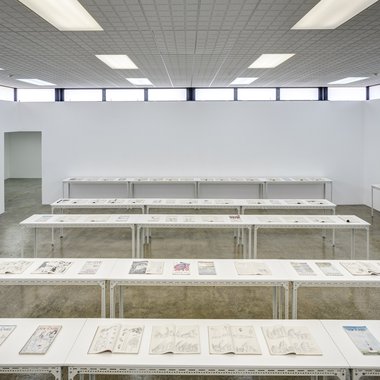
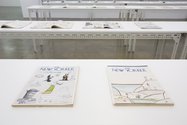
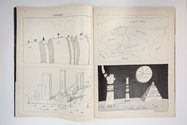
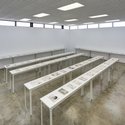
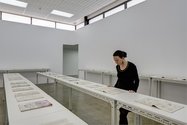
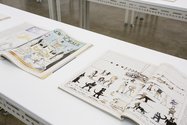
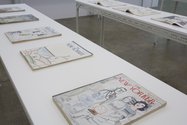

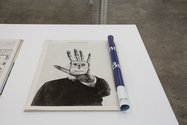
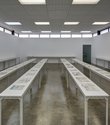
 Advertising in this column
Advertising in this column Two Rooms presents a program of residencies and projects
Two Rooms presents a program of residencies and projects



This Discussion has 2 comments.
Comment
Roger Boyce, 12:34 p.m. 7 October, 2012 #
Steinberg's an absolute delight and an artist's artist.
The ever-evolving work of one of New Zealand's best 2D artists - Mark Braunias - is inventively reminiscent of Saul Steinberg's winning and offhandedly cerebral investigations.
John Hurrell, 1:58 p.m. 7 October, 2012 #
Mmm well I have thought that in the early 90s Shane Cotton showed (in his motifs) a pronounced Steinberg awareness.
Participate
Register to Participate.
Sign in
Sign in to an existing account.